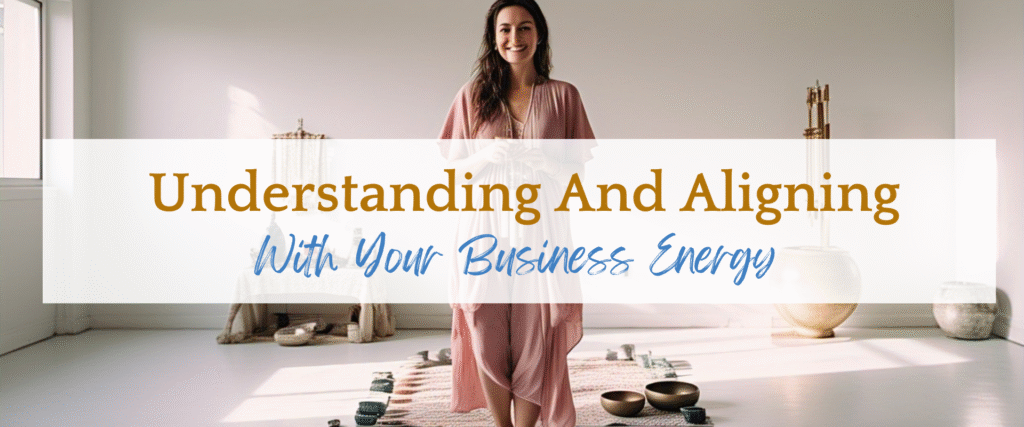
There’s a quiet revolution happening in the way we think about leadership. More and more, heart-led entrepreneurs are recognising that leading doesn’t have to mean controlling every outcome, forecasting every risk, or having all the answers. In fact, the most magnetic and sustainable leadership doesn’t come from control, it comes from presence. From the ability to hold a vision while staying open to how it unfolds. From guiding with clarity while allowing room for collaboration, intuition, and surprise.
Many of us were raised with a model of leadership that looked like authority and certainty. Leaders were expected to be decisive, unflappable, and in control at all times. But for those of us building businesses that are soulful, intuitive, and human-centred, that model can feel rigid, exhausting, and out of sync with how we truly want to lead. The art of leadership now lies in the dance between structure and surrender, knowing when to take charge and when to let go. This blog is an exploration of how to lead without controlling, how to trust your energy and your people, and how to stay grounded in your power even as you soften your grip.
Why Control Isn’t the Goal
It’s natural to want to feel in control, especially when you’re deeply invested in your work. Your business is a reflection of your heart, your ideas, and your values. But control, when it becomes the dominant energy, can create more resistance than results. It tightens your nervous system, narrows your focus, and often closes you off to better solutions, deeper trust, or unexpected support. Control operates from fear. From a belief that if you don’t handle it all, it will fall apart.
But true leadership is about guidance, not micromanagement. It’s about creating a strong container while allowing the contents to shift and evolve. Control says, “It has to be this way.” Leadership says, “Here’s the vision, let’s see how we can bring it to life.” When you let go of needing to control every detail, you create space for collaboration, creativity, and deeper alignment, not just with your team and clients, but with your intuition and higher self.
- Control creates tension: When you’re overly attached to outcomes, your body tenses, your mind races, and your energy becomes less magnetic. People can feel it. It doesn’t feel safe, it feels stifling.
- Surrender allows collaboration, with your team, clients, and intuition: When you trust others to contribute, your leadership becomes inclusive and empowering. When you trust your intuition, you become more aligned. Surrender isn’t weakness, it’s a willingness to co-create.
- True leadership is rooted in trust: Trust in yourself, in the people around you, and in the process. When you lead from trust, you’re more adaptive, more intuitive, and more available to what actually wants to emerge, not just what you planned.
Letting go of control doesn’t mean losing direction. It means trusting that your presence, your values, and your capacity are enough to hold the space, even when things don’t go as planned.

How to Surrender While Staying Steady
Surrender doesn’t mean you float through your business without structure or clarity. It means you stop gripping tightly and start guiding gently. It means you stay anchored in your intention, but release the need to micromanage the how. This is where many entrepreneurs struggle, thinking they have to choose between being hands-off or hyper-controlling. But there’s a middle path: one where you set the vision clearly, then allow space for how that vision comes to life.
This approach requires presence. It asks you to lead from your centre, not your strategy alone. It also requires a willingness to feel discomfort, to sit with uncertainty, to be flexible when plans change, and to let go of outcomes you thought you needed. The more you practise surrender in small ways, the more confidence you build in your ability to lead from trust rather than tension.
- Set the vision, not every detail: It’s your job to articulate the bigger picture. What are you creating? Why does it matter? What’s the energy behind it? But you don’t need to script every step. Let the how unfold through collaboration, intuition, and experimentation.
- Make space for the unexpected: Not everything has to be planned in advance. Some of the best ideas come in the moment, during a conversation, in a quiet pause, or when someone brings a new perspective. If your plan is too rigid, you might miss it.
- Let go of needing to “know” and practise allowing: You don’t need all the answers. Sometimes, your next step will only become clear when you take the first one. Practise letting go of the need for certainty and lean into curiosity instead.
Surrender doesn’t erase leadership, it refines it. It shifts your leadership from external performance to internal presence. From control to co-creation.
Leading from a Grounded Centre
The most powerful leaders aren’t the ones who speak the loudest or make the boldest claims. They’re the ones who lead from within, anchored in their values, connected to their truth, and clear in their presence. This kind of leadership doesn’t waver in chaos because it’s not built on perfection, it’s built on embodiment. And when you lead from your centre, you become a steady force. Not because you’re controlling everything, but because you’re deeply rooted.
Leading without controlling doesn’t mean being passive. It means being clear, present, and adaptive. It means setting strong containers for your work, boundaries, timelines, intentions, while also being open to how they evolve. This balance of firmness and fluidity creates leadership that is both grounded and responsive. It allows you to stay connected to your mission while also allowing your methods to evolve as needed.
- Anchor in your values: When everything else feels uncertain, your values are your compass. If you know what you stand for—integrity, kindness, creativity, you can make decisions with clarity, even if the path is unclear.
- Stay flexible in your methods: You can hold a strong vision while experimenting with different ways to reach it. Flexibility isn’t failure, it’s wisdom. The more options you allow yourself, the more likely you are to find the one that truly fits.
- Prioritise resonance over rigidity: Does this feel aligned? Does this path honour your body, your intuition, and your clients? Let these questions guide your leadership more than “Am I doing this right?” or “Will this make me look successful?”
When you lead from a grounded centre, your business becomes a reflection of your presence, not just your plan. It becomes a space where people feel safe, seen, and inspired, not because you control them, but because you trust them.

Conclusion
You don’t need to grip tightly to lead powerfully. In fact, the tighter you hold, the more tension you create, for yourself, your team, and your clients. But when you soften your grip, when you trust yourself, your process, and the people around you, you create a space where leadership becomes not a performance, but a presence. A space where business becomes not just a machine, but a mirror of your values and vision.
Let go of the pressure to control every outcome. Instead, root deeply into who you are, what you stand for, and the vision you’re here to hold. From that place, you can lead with clarity and courage, without needing to predict every step. You can respond, adapt, collaborate, and trust. And in doing so, you create a business that’s more resilient, more authentic, and far more alive.
The art of leadership isn’t about control. It’s about presence. So lead from your centre. Stay open. And let your business surprise you in all the best ways.


